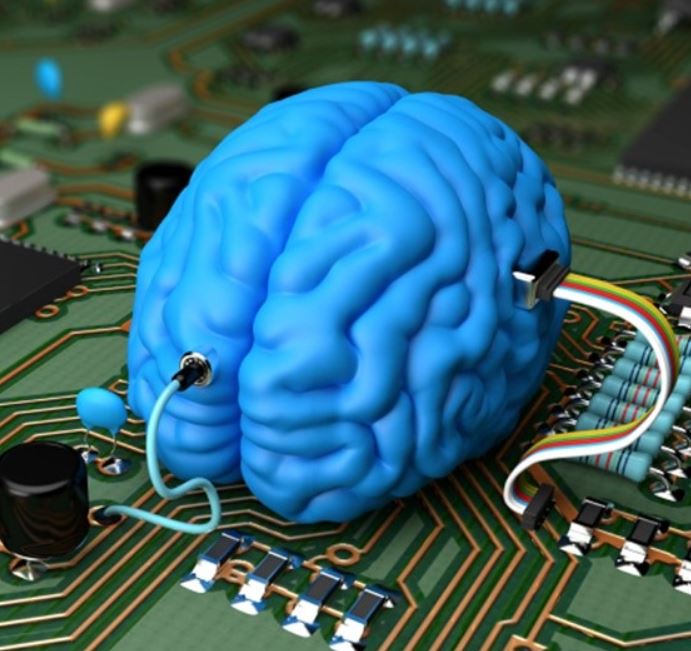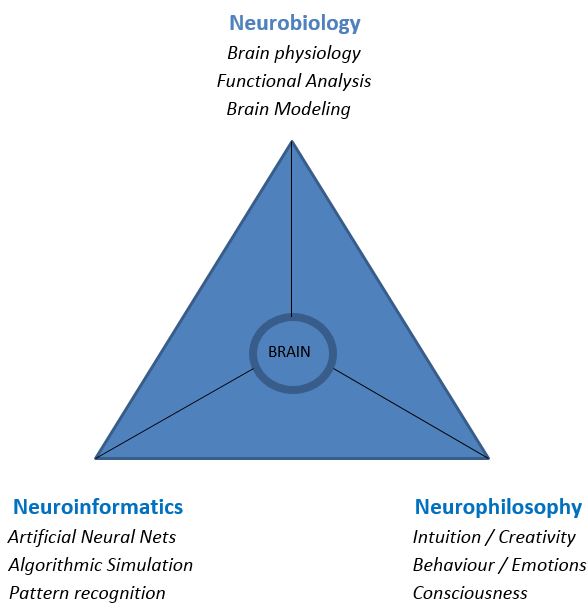 Picture Credit: Universidad Autónoma de Sinaloa, Mexico
Picture Credit: Universidad Autónoma de Sinaloa, Mexico
Introduction
Intelligence has been defined in many ways including: the capacity for logic, comprehension, self-awareness, learning, emotional knowledge, reasoning, planning, critical thinking, and problem solving. The aim of artificial intelligence (AI) is to augment or substitute biological intelligence with machine intelligence. So far AI supports machine reasoning, natural language processing, speech – and object recognition, human-computer interaction and emotion sensing. To realise these applications, Artificial Neural Networks (ANNs) and Machine-Learning Algorithms (Deep Learning) are applied to detect deviations from a given norm or to predict outcomes based on the analysis of historic data. However, this neuroinformatic, mathematical approach to simulate the human brain with artificial neurons is reaching its limits, both in terms of prediction quality as well cost and time involved to process huge sets of training data. To overcome the present limitations, neurobiology and the results of brain research must be considered, modelling brain activity based on the behaviour of real neurons, a task far more complex than the simulation conducted with ANNs. To observe the functionality of real neurons and their synaptic networks, next to invasive testing of animal brains under various conditions, non-invasive observation of human behaviour with different brain-scanning devices provide input for modelling real human brain functionality. Philosophical and psychological issues related to human behaviour from a neuroscientists point-of view have given birth to Neurophilosophy, a relatively new academic discipline in AI research. In summary we can envision an interconnected triangle of brain-focused AI research depicted by the following graph:

Integrating results of ongoing research in ANNs (neuroinformatics), brain functionality (neurobiology) and human behaviour (neurophilosophy) leads to better toolsets for augmenting human intelligence with AI.
The intersection of Neuroinformatics and Neurobiology
The human brain has been the main inspiration for AI researchers for decades. The quest for recreating cognitive capabilities of the brain in deep neural networks remains one of the elusive goals of AI. From that perspective, the intersection of AI and neuroscience could be considered one of the most fascinating areas of research in modern science. This intersection stipulates a bi-directional relationship. While the human brain is certainly an inspiration for artificial neural network architectures, advancements in AI are helping neuroscientists better understand obscure areas of the brain. A new generation of neural networks is rapidly expanding beyond basic connections between neurons and recreating some of the core building blocks of human intelligence.
The intersection of Neurophilosophy and Neurobiology
Recent neuroscientific progress has led to the extension of neuroscience to apply and include philosophical and psychological issues such as consciousness, free will or intuition. The term ‘Neurophilosophy’ is used to describe the relationship between philosophical theories and neuroscientific hypothesis. This will not only enrich neuroscience and provide new ideas for experimental designs, but it will also change and reverberate philosophy itself. Practical neurophilosophy focuses on the investigation of the psychological and neural conditions of ethical concepts, for example the question do we have free will? The observation that free decision-making is temporally preceded by neural activity specifically related to the decision in question has put the concept of free will in doubt. If free will is pre-determined by neural events in the brain, one can no longer speak of a free will. Further research on this issue will significantly impact the positioning of our own self in decision-making situations.
The intersection of Neuroinformatics and Neurophilosophy
The functionality of the human brain can be deduced from observing human behaviour performing specific tasks. The introduction of different brain-scanning technologies (fMRI, EEG etc.) to monitor neural activities related to these tasks is vital in correlating brain functionality with human intelligence. The same technologies are also applied to detect abnormalities in bodily organs, for example detecting cancerous tumours. Common to both is the massive onfall of data from the images generated by the scanning process. To apply machine learning to detect patterns within the data recorded represents a major asset in advancing neurophilosophy to new insights about the relationship of brain functionality and human behaviour. In return characteristics of human behaviour such as insights to learning and memory might stipulate new approaches in the design of ANNs.
AI and Decision-Making
Decision-making provides one good example how the application of integrated AI (neuromathematics, neurobiology and neurophilosophy) can improve the decision-making process.
Human decisions result from a mixture of emotions, intuitions and logical deductions. Both, neuroinformatics as well as neurophilosophy, can augment humans with AI technology to facilitate and improve the decision-making process:
Rational decision-making enhanced by Neuroinformatics:
Limited memory: Humans have limited memory. Computational models of learning have advanced ANNs to new levels of functionality. Applying external memory and ‘unlimited’ intelligent access to cloud-information helps to overcome this limitation.
Limited processing: When calculations or deductive logic are required and when the problem size grows and strong rational skills are required, human capacity is limited. Specialised AI processors and software help to overcome this limitation.
Emotional/intuitive decision-making enhanced by Neurophilosophy:
Emotions: Emotions are probably the most commonly applied process in human decision-making. Emotion sensing can increase the awareness towards one’s own biases, potentially improving the objective quality of the decision.
Intuition: While experience might partially be represented by data, a significant part remains hidden in human memory, accessible through intuition. Modelling intuition with AI technology represents one of the yet unresolved challenges of AI.
While emotions are likely to play a role in personal decisions where taste and style, consciously or subconsciously, influence the decision-making process, rationality and intuition are typically used in individual as well as organizational decision-making situations. Many of us are used to making intuitive decisions in our daily life. As soon as subjective judgement is involved, rational reasoning is very difficult to apply. Many consider the division between analytic (neuroinformatical) and intuitive (neurophilosophical) thinking as opposites. However, a 2015 meta-analysis – an investigation in which the impact of a group of studies is measured – has shown that analytic and intuitive thinking are typically not correlated and could happen at the same time. So, while it is true that one style of thinking likely feels dominant over the other– especially in rational thinking – the subconscious nature of intuitive thinking makes it hard to determine exactly when it occurs. Neurobiological research suggests that the brain is a large pattern recognizing system, constantly comparing incoming sensory information and current experiences against stored knowledge and memories of previous experiences. Every interaction, happy or sad, is catalogued in our memory. When we subconsciously spot patterns, the body starts firing neurochemicals in both the brain and the gut. These ‘somatic markers’ give us that instant feeling that something is right or wrong. Not only are these automatic processes faster than rational thought, but our intuition draws from decades of diverse qualitative experience (sights, sounds, interactions, etc.) – a human feature that AI and deep-learning so far are unable to match. It is also faster than rational thought, which means intuition is a necessary skill that can help decision-making when time is short and traditional AI analytics may not be available. The question should not be whether rational reasoning is better than intuitive decision-making. A mindset that considers both, neuroinformatics as well as neurophilosophy, should be applied to improve the quality of decision-making.
Conclusion
Regardless of the decision-making process – rational, intuitive or emotional – understanding the functionality of the human brain holds the key to enhancing the quality of human decision-making. Both neuroinformatics and neurophilosophy are driven by ongoing research in neurobiology, hence a triangular approach to decision-making, integrating all three nodes needs to evolve. To accomplish this task, we need an interdisciplinary platform where all stakeholders – engineers, neuroscientists, doctors, psychologists, philosophers, educators, law makers etc. – communicate to build a networked-AI knowledge pool. This in turn could be the foundation for new business models, similar to the Open Source Initiative (OSI) accelerating the adaptation of information technology through shared software modules cutting cost and time to realize new applications.
AI implies ‘research in progress’
As complexity continues to accelerate, collective, shared intelligence will be mandatory in providing corporate and organisational leadership and solving environmental, social and economic problems in respect to health care, climate control, wealth distribution, food supply, to name just a few. Above all, educating individuals to develop the personality required to optimally apply AI and to support life-long learning with personalized technologies is likely to become one of the most challenging tasks. To follow this route, trust in technology and its market players is a must and needs to be embedded in a societal culture with government institutions protecting its values. Switzerland, a small country lacking natural resources, has a long history of successfully managing innovation to the benefit of a population speaking three government supported languages. Direct democracy, decentralized over 24 regions (cantons), represents a backbone of Swiss identity and stability. Based on these assets, Switzerland has launched an AI movement, dubbed ‘Cognitive Valley ™’, with the mission to support the cultural shift stipulated by AI and to strengthen the Swiss economy vis-à-vis the onslaught of AI technology giants from the US and China. The goal of this movement is to make Switzerland a leading country in the development of AI based quality products and services. A world class education system, the best public transport services, a reliable communication and electricity infrastructure as well as high standards in ethics and humanities are excellent prerequisites for this bottom-up movement to succeed.